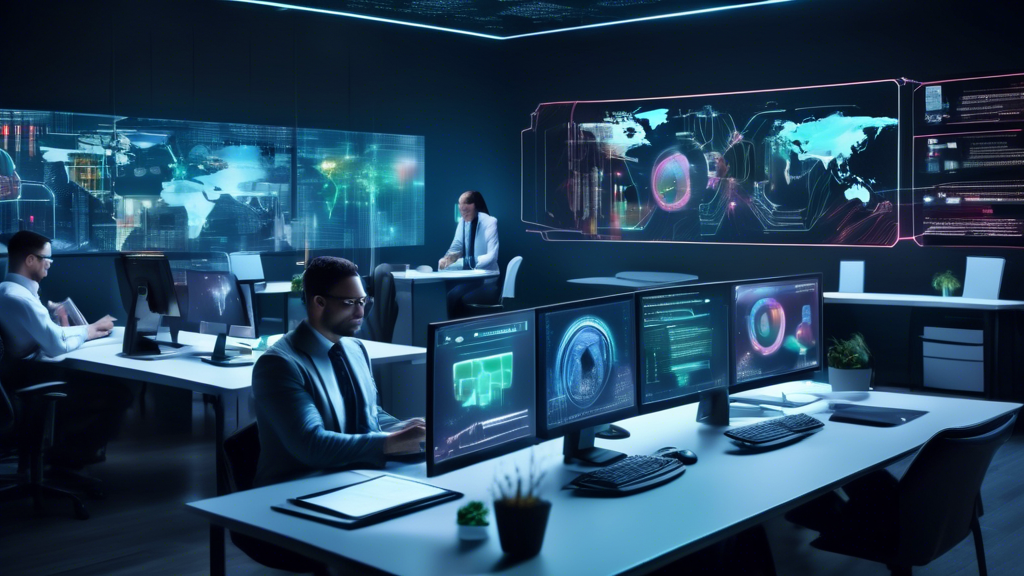Understanding EDR and Its Importance
Endpoint Detection and Response (EDR) solutions are essential tools in today's cybersecurity landscape. They provide real-time visibility into security events at the endpoint level, helping organizations detect, investigate, and respond to threats. With cyber threats becoming increasingly sophisticated, an effective EDR solution is crucial for maintaining robust security defenses.
Signs It's Time to Upgrade Your EDR Solution
1. Increased Frequency of Security Incidents
If your organization is experiencing a higher frequency of security breaches or incidents, it may indicate that your current EDR solution is not sufficiently addressing emerging threats. An outdated EDR may lack the advanced detection capabilities needed to identify and mitigate complex attacks.
2. Limited Endpoint Visibility
Modern cyber threats often target endpoints, which include laptops, desktops, and mobile devices. If your EDR solution can't provide comprehensive visibility across all endpoints, you’re likely missing critical threat indicators. Upgrading your EDR can ensure that you have a 360-degree view of all endpoints within your network.
3. Slow Response Times
Effective EDR solutions should enable swift detection and response to threats. If your security team is struggling to respond quickly due to inefficient tools or processes, this is a critical issue. Upgrading to a more advanced EDR system can streamline incident response, minimizing potential damage and downtime.
4. Integration Challenges
An effective EDR solution should seamlessly integrate with other security tools and systems in your organization. If you’re facing integration challenges, which lead to siloed data and decreased efficiency, it may be time to consider a solution that offers better compatibility and interoperability with your existing security ecosystem.
5. Lack of Automation
Manual processes can be time-consuming and error-prone. Advanced EDR solutions offer automation capabilities that can help your security team handle repetitive tasks, allowing them to focus on more strategic initiatives. If your current EDR lacks these features, upgrading can significantly enhance your operational efficiency.
Benefits of Upgrading Your EDR Solution
Enhanced Threat Detection
Modern EDR solutions use sophisticated algorithms, machine learning, and artificial intelligence to detect threats more accurately. These technologies can identify patterns and anomalies that traditional EDR systems might miss, offering a higher level of protection.
Improved Response and Remediation
Upgrading your EDR solution can lead to faster and more effective response and remediation processes. Enhanced automation and orchestration capabilities allow for immediate action on detected threats, reducing the time and effort required by your security personnel.
Greater Endpoint Visibility
Newer EDR solutions provide comprehensive visibility across all devices in your network, ensuring that you can monitor and protect each endpoint effectively. This level of visibility is critical for identifying and addressing security gaps that could be exploited by attackers.
Integration and Scalability
Upgraded EDR solutions are designed to integrate seamlessly with other security tools and platforms, providing a unified and cohesive security posture. Additionally, they can scale according to your organization’s needs, ensuring that you have sufficient resources to protect your growing IT environment.
Conclusion
In an era where cyber threats are continually evolving, ensuring that your EDR solution is up-to-date is crucial for maintaining a strong security posture. By recognizing the signs that it’s time to upgrade and understanding the benefits of modern EDR solutions, organizations can better protect their digital assets and respond more effectively to cyber threats. Investing in an advanced EDR solution is not just a necessary expense but a strategic move towards enhancing your organization’s resilience against cyberattacks.
Logics Technology Managed IT Services
